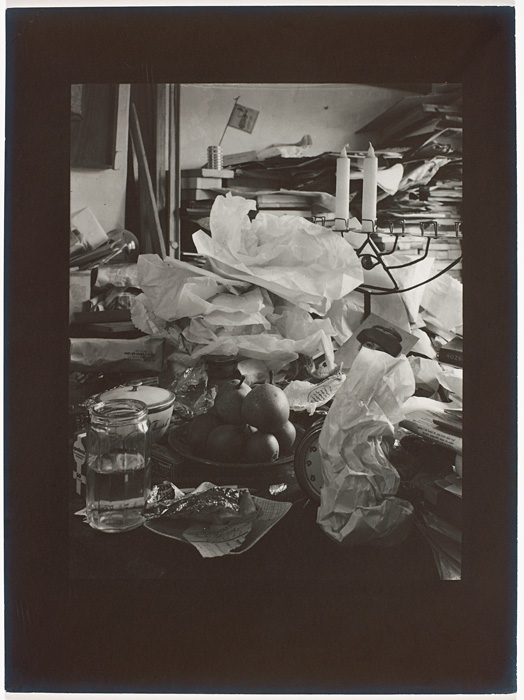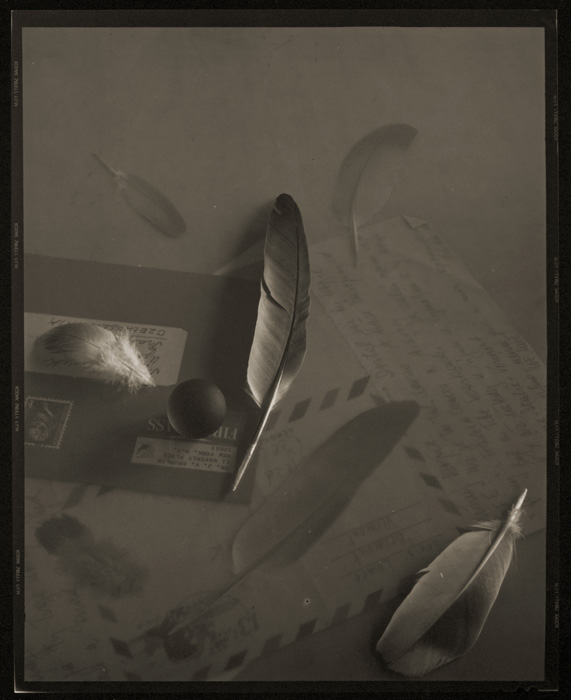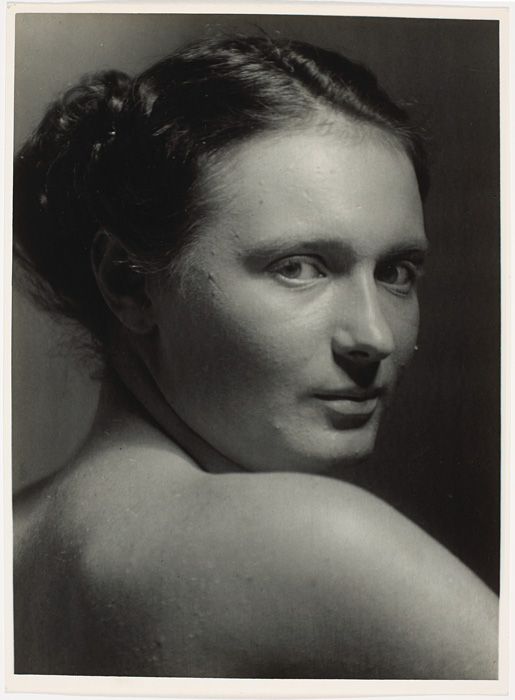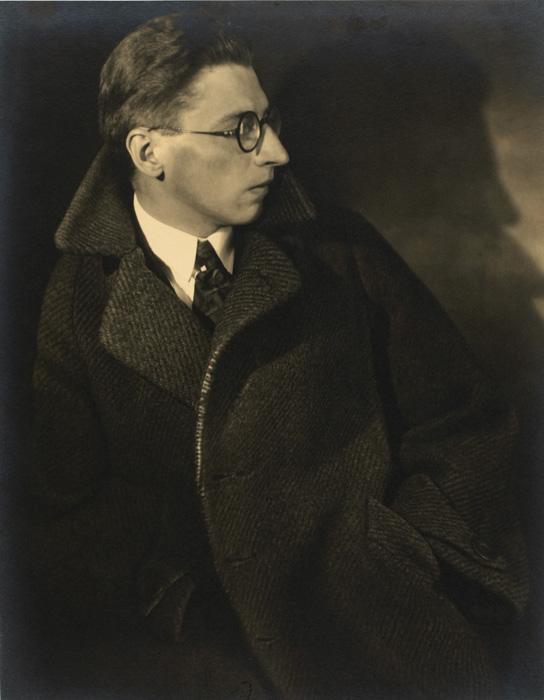[Spring-Summer 2017]
By Pierre Dessureault
In the early 1920s, when Josef Sudek was becoming established as a photographer, Prague had emerged as a point of convergence for avant-garde movements from France, Germany, and Russia. After the dismantlement of the Austro-Hungarian Empire following the Great War, members of these movements were interested in rethinking art – both how it was practised and its relationship with life. Pictorialism, New Objectivity, and research done by the Bauhaus inspired the dominant figures of Czech photography of the time. To illustrate this, the version of the exhibition presented in Ottawa1 includes a section called “Sudek’s Circle,” featuring Adolf Schneeberger’s pictorialist portraits, as well as compositions and photograms by Jaromir Funke and by Jaroslav Rössler, one of the towering figures of the Czech avant-garde. Although Sudek always kept his distance from “schools,” in his early practice he borrowed certain strategies from two major movements that made a unique impression on interwar photography.
In the pictorialist-inspired work that Sudek produced in the 1920s, he was interested in the surface of things modulated by all types of light. He systematically used blurriness in his landscapes and his views of Prague, the island of Kolín, and the veterans’ hospice, dissolving forms into an ethereal atmosphere or into depths of darkness. Although his images of the restoration of the Saint-Guy cathedral (1924–28) also give light a starring role, the treatment is completely different. In both the general views and the detail pictures, the light is materialized in long streaks; it invades the space, cuts it up into planes, hollows out perspectives to establish vanishing lines, and gives a model for depicting the monumentality of Gothic architecture with all the precision of which the medium is capable.
In Sudek’s commercial work, produced in studio from 1927 to 1936, he implemented the principles of New Objectivity. In his search for innovation, he may have taken to heart the words of his contemporary, Albert Renger-Patzsch: “Let us therefore leave art to artists and endeavor to create, with the means peculiar to photography and without borrowing from art, photographs which will last because of their photographic qualities.”2 In these advertising photographs, Sudek usually adopts a floating point of view in his bold geometric compositions that isolate the manufactured products to underline volumes and textures, highlight pure forms, and reveal their beauty. The lighting, usually uniform, describes an inclusive space in which objects, often dissimilar, coexist in relationships that subvert the usual perception.
Sudek refused to imitate reality. By situating his practice at the crossroads of pictorialism and modernism, he transposed subjects from the literality of recording into the world of images of the visible. It is a world structured by the fundamental characteristics of the medium: tonal values, blur and precision, framing and angle, choice of materials, and photographic techniques become as integral a part of the image as the subject.
In 1940, Sudek began to concentrate on his studio on Újezd Street and the surrounding area for his subject matter. Artist Václav Sivko, his friend and onetime assistant, described the sixty-one square-metre studio in which Sudek lived from 1927 to 1959 and worked until he died in 1976: “In the backyard of an old tenement house . . . where horse chestnuts grow and among them a dwarfed, twisted apple tree, stands a small wooden shack which Josef Sudek has made his studio. He lives there, surrounded by things he loves: the boxes with precious negatives are stacked against the walls in a picturesque chaos and only Sudek himself knows where to look for what, the deep drawers of a small counter hiding countless art objects and bric-a-brac, black and grey photographer’s backdrops, a large studio camera, cupboards crammed with gramophone records, walls covered with pictures, paintings, statuettes, reliefs, fragments of large statues on the floor . . .”3) In this sheltered environment in which the gaze reigned supreme, Sudek produced the great cycles of his artistic maturity: The Window of My Studio (1940–54), The Garden of My Studio (1944–70), series of still lifes (1949–54), and Labyrinths (1963–75). Each series was created over many years, in the end forming sequences of variations on a single theme expressed in multiple ways and taking full advantage of the capacities of the medium.
In The Window of My Studio, two gazes are superimposed. The first is Sudek’s, as he chooses and frames a portion of the real. The second is that of the camera, which transposes and condenses this fragment into another reality, that of the image. This double gaze, unified in the instant when the picture is taken, interiorizes the visible and forms the artist’s subjective vision, revealing his mastery of a visual vocabulary through which shapes and materials bring that vision to reality. For instance, the glass wall is sometimes transparent and opening onto the perspective of the garden, and sometimes an opaque or translucent surface on which appear traces of rain, snow, or condensation. Through this play on framing, shadows and light, on clearness and blurriness, the border between interior and exterior is erased. Inside and outside coexist in infinite variations that open unusual and unexpected perspectives on Sudek’s chosen subject.
The garden surrounding the studio often appears through the elements inscribed on the surface of the window glass and is used either as a backdrop against which the gaze stops or as a veil through which a few silhouettes can be distinguished – the fence, the small apple tree, and the wall of the neighbouring building, for instance, all of which have become familiar through the series of images. On the other hand, pictures taken outside juxtapose natural forms and built volumes in compositions that meticulously contrast human forms and the fluidity of natural elements materialized by the passage of seasons and variations of light.
The series of still lifes that Sudek produced in the microcosm of his studio never constituted an inventory of his environment that would give clues to his personality. Although they detailed his living and working space – bringing together a half-full glass, an egg, a chunk of bread, sausage, leftovers of a meal – these images offer only a few fleeting traces of a human presence. No more. And that’s fine. The biographical anecdotes that one might extrapolate from these sparse clues shed no light on the true foundations of his body of work. The simple compositions are far more significant: they transform the relationships among a few chosen objects by emphasizing their shape and the effects of light on them, thus playing on all the nuances of the medium to bring the studio’s bric-a-brac into the world of imagination and lyricism.
Although Sudek’s still lifes were often stripped down, the images in the Labyrinths series,4 some of which were produced in his second apartment-studio on Úvoz Street, portrayed fortuitous encounters of objects that seem to have been brought together in front of his lens by chance. These unique “still lifes” were actually complex constructions of shapes in which the precision of the frontal angle superimposed planes, sometimes blending them and playing on transparencies, sometimes demarcating them to accentuate the depth of the image and create the illusion of a third dimension. In these chaotic views, in which a mass of objects coexist haphazardly and light modulations bring out their patina, the details swarm; what, at first, seems to be a network of shapes entangled in the play of prisms and reflective surfaces is revealed as a composition that gradually finds its balance as the gaze gives meaning to the visible transcribed into this unified space.
All his life, Sudek saw himself as an advocate for Prague. In the wake of his series on the restoration of the Saint-Guy cathedral and the Castle, he decided to photograph, from every possible angle and under all light conditions – including night – the beauty of Prague and its gardens, a beauty based on Prague’s heritage of admirably preserved marvels of Baroque architecture and its large stock of Art Nouveau buildings. Sudek eschewed the city’s picturesque local colour and engineering feats in favour of a depiction inspired by his love of the city, magnified by his visual work on the photographic material: the detailed greys in an infinity of nuances sharply define the pictorial space and are combined to realize a vision that is balanced and classic. In his particularly remarkable nocturnal views, architectural forms overlap through chiaroscuro effects and cascading planes in semi-cubist compositions that highlight the beauty and mystery of his city, with its intertwining of epochs and omnipresent nature. His series on the Kinsky gardens and the Seminary, situated a few hundred metres from his studio in the Malá Strana district, bring out the splendour of this domesticated nature. He deploys his skill to capture in dense images a series of variations that have to do as much with atmospheric conditions as with the taking of the photograph itself, expressed here in a diversity of procedures that shape the image: silver prints include the entire range of blacks and whites, whereas the carbon prints soften the rendering of the image and temper the contrasts.
Sudek’s body of work is a meditation on photography as a medium and its endless capacity to interiorize the visible, transfigure it into a subjective vision, and translate it into image with a vocabulary in which the artist’s emotions and skills are combined with his mastery of the materials and properties of the medium. Photography thus becomes a veritable tool of intimate knowledge and celebration of the world rather than a machine for producing an infinite number of images.
Translated by Käthe Roth
2 Albert Renger-Patzsh, “Goals” [1927], quoted in Wieland Schmied, Neue Sachlichkeit and German Realism of the Twenties, exh. cat. (London: Arts Council of Great Britain, 1978), 86.
3 Václav Sivko, in his speech at the inauguration of an exhibition by Sudek in 1958, quoted in Anna Farova, Josef Sudek: Poet of Prague (New York: Aperture, 1990), 13.
4 Josef Sudek, Labyrinths (Prague: Torst, 2013).
[See the printed or digital version of the magazine for the complete article.]
Purchase this article








